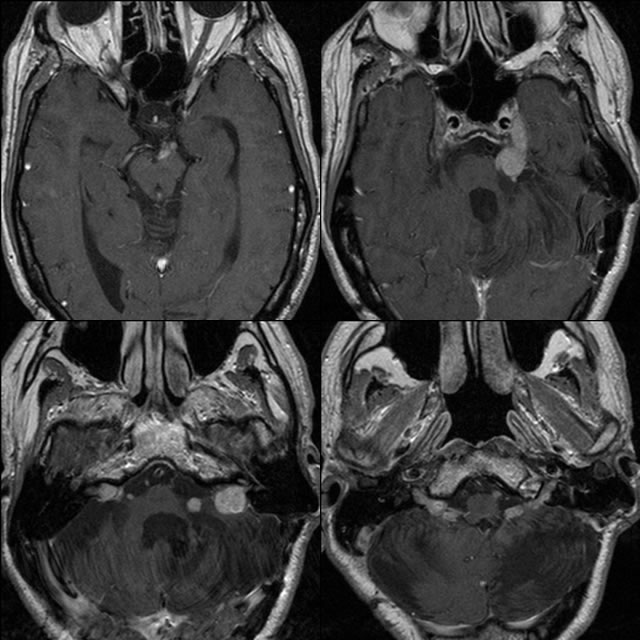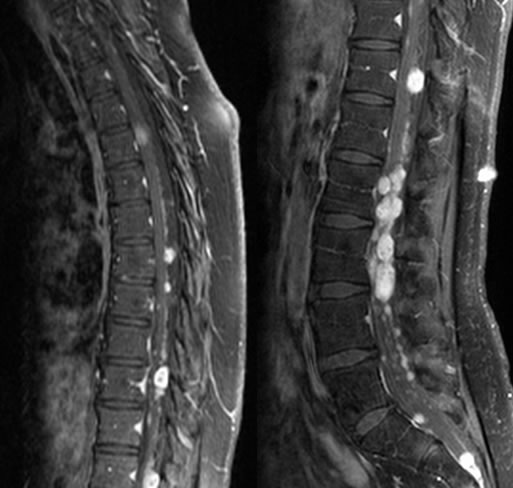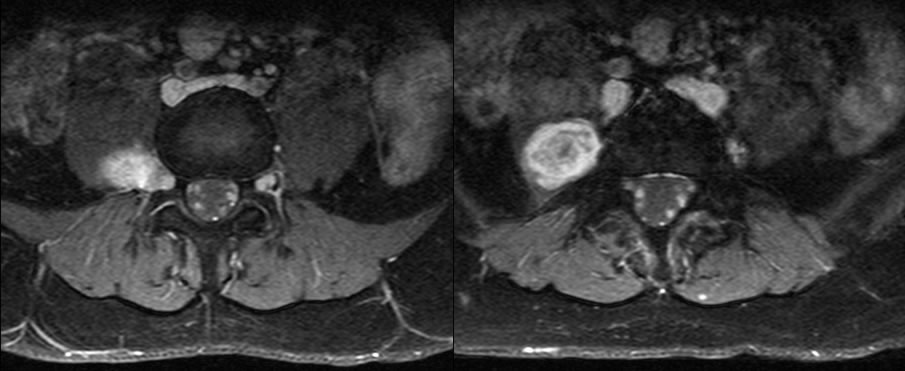


Neurofibromatosis type II
Findings:
Axial post-contrast T1 images of the head demonstrate multiple enhancing lesions involving the posterior fossa. There are bilateral lesions involving the internal auditory canals and cerebellopontine angles that are consistent with acoustic neuromas. A lobulated enhancing mass within the left Meckel's cave with extension into the right pre-pontine cistern is consistent with a trigeminal neuroma. Several other cranial nerves are also involved including the left third nerve and bilateral nerves 9, 10, and 11. There are remote postoperative changes from bilateral suboccipital and small left parietal craniotomies.
Sagittal post-contrast T1 images of the thoracic and lumbar spine demonstrate innumerable intradural, extramedullary enhancing masses throughout. The spinal canal appears essentially completely obliterated at the L2-L3 levels. There are few subcutaneous enhancing nodules that likely represent subcutaneous neurofibromas. Axial post-contrast T1 images of the L4-5 level shows a large lesion extending through the neural foramen and resting along the posterior margin of the right psoas muscle.
Differential Diagnosis:
Neurofibromatosis type II, severe metastatic disease
Discussion:
Neurofibromatosis type II (NF2) is a rare autosomal dominant neurocutaneous disorder that manifests as multiple, mostly non-malignant brain tumors. The hallmark lesions of NF2 are bilateral acoustic Schwannomas, which occur in 90% of patients. About 50% of patients will develop tumors in other cranial nerves or the meninges. Spinal cord lesions are also prevalent, which may be intramedullary lesions (spinal astrocytomas, ependymomas) or extramedullary (Schwannomas, meningiomas). Most patients with NF2 will develop cataracts, which typically develop at a young age. Treatment is typically surgical debulking of tumors as symptoms develop. Hearing may be preserved if caught early, but if not caught in time, patients may require an auditory assistive device. Additional discussion of NF2 may be found elsewhere on this site.
Case contributed by Christopher Heald, UC M4
BACK TO
MAIN PAGE



